Original URL: https://www.theregister.com/2006/12/08/hd_tv_uk_guide_updated/
HD TV in the UK
Everything you need to know... fully revised and updated
Posted in Personal Tech, 8th December 2006 11:35 GMT
Buyer's Guide Christmas is a-coming and the consumer electronics industry is out to sell you a brand spanking new HD TV. But is now the right time to buy? In this fully revised and updated report, Reg Hardware guides you past the gotchas...
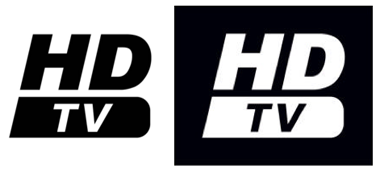
Analogue to digital
The digital switchover starts in 2008 when the Border region has its analogue signal turned off. The process then works through Granada, Wales and the West Country in 2009; Grampian, Scottish and the West in 2010; Yorkshire, Central and East Anglia in 2011; and culminates in London, Meridian and Ulster in 2012. The consumer electronics industry is using the 'Big Switch' to sell HD TVs but the truth is that you can quite happily watch digital TV on a regular analogue CRT TV, as anyone who uses a Sky, NTL, Telewest or Freeview set-top box can testify.
It's easy to get confused, as the majority of the buying public associates digital TV with a flat LCD or plasma panel. The industry wants to sell us new, pricey flat-panel displays, and digital is a way to help it do so. So is HD TV.
But if you've visited a TV shop recently and seen an HD TV in action it's a safe bet that you were watching current standard definition (SD) TV content because there's relatively little HD content being broadcast at present. If you were lucky, you may have seen a Sky HD broadcast, content streamed off a hard drive, or even from a Blu-ray Disc or HD DVD. But it remains the case that the vast majority of content on offer to UK consumers is standard definition material, either broadcast or provided on DVD.
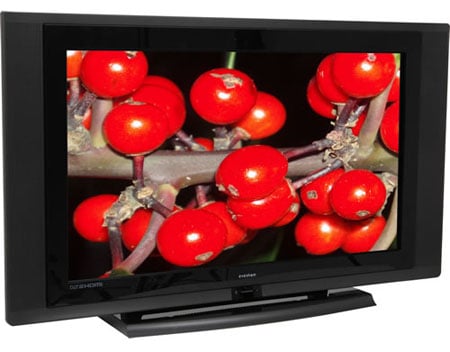
Screen test
The TV itself will have been a flat LCD or plasma screen because most British houses aren't generally large enough to accommodate a full-size rear-projection DLP (Digital Light Projection) TV, which is a shame as they are relatively inexpensive. The Samsung SP50L6HDX sells for about £949 which is pretty darn cheap for a 50in (125cm) screen. However, DLP is an acquired taste as the colours can be harsh on the eye so the picture lacks the warmth of a plasma display's image.
It would be lovely if we could come up with a rule of thumb to separate plasma and LCD screens but the latest LCDs look absolutely superb, with gorgeous colour reproduction, which used to be the domain of plasmas. If you walk around a showroom and hold your hand above the vents at the top of the TV you'll find some plasmas are incredibly cool while some LCDs are surprisingly warm, both contrary to the stereotype. In practice there's little to choose between the two technologies, so the main thing is to trust your eyes and your judgement, instead of blindly following the spec sheet.
Aspect ratio
A decent SD or HD TV can handle a change in aspect ratio with minimal fuss, which is useful as some content, such as the news, is still broadcast in old-style 4:3 (width:height), while movies and much of the current crop of TV are transmitted in a widescreen, 16:9 format, but you'll notice that the news, for instance, tends to be 4:3 so if your TV is a bit stubborn, Jon Snow's face will look slightly stretched.
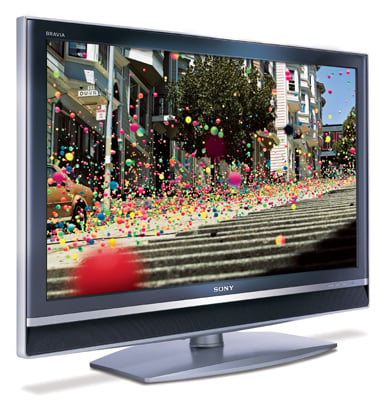
The situation is going to get worse when we add HD content to the mix as your TV will have to be flexible enough to chop and change aspect ratio and resolution. Satellite broadcaster Sky once said it had chosen to broadcast in both 720p and 1080i resolutions, but earlier this year it announced it will broadcast everything in 1080i. Other broadcasters have yet to decide which they favour, but are likely to use both, for different programmes, depending on factors such as how much movement the show contains, for example.
Interestingly, recent BBC trials of HD broadcasts, which used both 720p and 1080i, both encoded at high and low bit-rates, found that while the differences in picture quality were clear in the lab, ordinary viewers were generally impressed with all the pictures and didn't detect much of a difference between them.
Crucially, any 'HD Ready' HD TV has to be capable of displaying both 720p and 1080i content, either by expanding the image or shrinking it, depending on the screen's native resolution and sometimes its physical size. More and more screens are also supporting 1080p. While 1080p may never become a broadcast format, it'll be used by the next-generation optical disc formats, HD DVD and Blu-ray Disc, and by Microsoft's Xbox 360 and, soon, Sony's PlayStation 3.
HD Resolutions
For a TV picture to be HD it has to be one of three resolutions: 720p, 1080i or 1080p. There are other resolutions, but they're essentially standard definition (SD) sizes. The resolution's number is the number of horizontal lines that make up the image, analogous to its height in pixels. The letter, p or i, stands for 'progressive' or 'interlaced'.
Progressive images are displayed like a movie, one frame at a time, in rapid succession. Interlacing is the same technique used in regular TV: send half the picture at a time but do so twice as quickly. It's a bandwidth-saving technique. Each 'half' of the image comprises alternate sets of lines, so first you send lines 1,3,5,7... etc. then you send 2,4,6,8... and so on. The first set is drawn on the TV screen, then the second lot, but the speed is such that they eye doesn't notice.
Well, almost. In practice, this approach can create visible artefacts when the image is moving rapidly and there's a slight downgrade in the image's effective resolution. This isn't an issue with progressive pictures, which is why many US HD broadcasters show programmes in 720p not 1080i, even though the latter has more pixels and therefore should be more detailed.
It's a good idea to check an LCD's native resolution: a TV that's touted as 1080p but only has, say, a 1,280 x 800 display panel will have to scale the image down from 1,920 x 1,080, the size of a 1080i/1080p image. In fact, it's probably scaling down to 720p's 1,280 x 720, with the remainder of the 800 horizontal lines making up a black border above and below the picture.
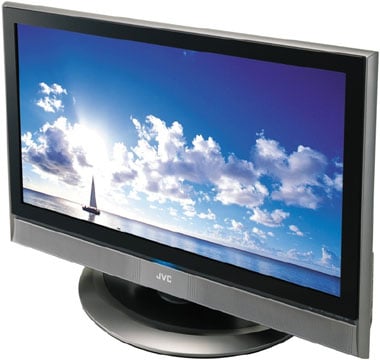
You can watch low-resolution SD TV on a high-resolution HD TV and it can look good or bad, depending on the quality of the hardware - again, get the shop to demo both kinds of content. If you're unconvinced you can splash out £90 on an LG DVK9900H upscaler which supports 1080i and will convert an SD picture to HDTV resolution, but we strongly suggest that you try before you buy. By its nature upscaling technology has to guess how to fill in all the pixels that the target screen has and the 768 x 576 source doesn't. And the resolution won't ever be as clear and as sharp as a picture that is displayed at its native resolution.
For some buyers, the poor look of SD content on LCD TVs - HD Ready or otherwise - can be a deal-breaker. And that's important to know if you're going to be watching a lot of SD content on your flat-panel TV.
Cables and copy-protection
You'll need to get the HD content onto your TV so it's time to talk about cables and connections. You'll want one SCART connector for your current DVD player and a second SCART for your PS2 or Xbox, and component-video will come in handy if you have an Xbox 360 which has HD output. You can also use component to carry HD content provided it's not copy-protected. Sooner or later you can expect that most HD content will be encrypted, and that means using an HDMI (High-Definition Multimedia Interface) connector.
As the encrypted HD signal passes down the line each device in the chain checks that the next device has an HDCP (High-bandwidth Digital Content Protection) chip which holds the encryption keys securely. The visible part of this chain is the HDMI connector, which looks similar to a Firewire port. Provided you connect your PS3 or HD DVD player to your HDTV with HDMI then all is well. HDMI supports both audio and video so if you want the full home theatre effect you'll need a surround sound receiver with HDMI pass-through.
The content protection chain is supposed to end at your HDTV when you watch the picture and listen to the audio, but if, say, you connect a PVR or a camcorder so you can record shows to hard disk or digital tape then the chain is broken. The system responds by dropping the resolution of the image so 1080i HD drops from 1,920 x 1,080 to 960 x 540, and a 720p image will drop even lower, probably to 480p which is an HD standard that is similar to the US TV system, NTSC.
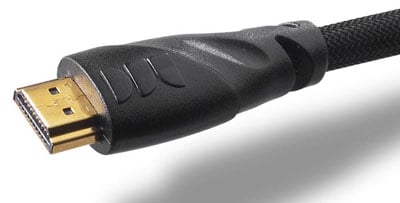
In other words, if there's a glitch or one of your pieces of hardware doesn't fully support HDCP you'll end up with an image that is worse than you get from standard-definition TV today.
Content
Sky is broadcasting more and more HD programming, but you have to pay for it: £10 a month for the content itself and £299-399 for the Sky HD box, depending on how many other channels you select to subscribe to each month. And then there's the cost of a dish if you don't already have one.
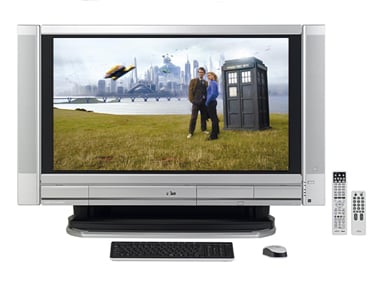
The missing link is the BBC and free-to-air. We're told that the Beeb won't be able to transmit HD TV signals alongside analogue and SD digital broadcasts. The BBC, ITV, Channel 4 and Five have been trialling HD over the Freeview network in London, but as things stand, HD Freeview won't be an option until 2012 when the analogue signal is turned off, freeing up the extra bandwith bandwidth needed to broadcast HD alongside digital SD.
You can get some BBC and ITV HD content through NTL-Telewest's TVDrive system, but don't forget Telewest is selling BBC HD to its customers when they are also obliged to pay a licence fee. We should all be able to get BBC services free-to-air, including HDTV.
TVDrive costs £10-15 a month, depending on how much you're already paying NTL Telewest each month for its regular TV, phone and broadband services.
Time to buy?
So let's look at the big questions. Do you need an HDTV? The key factor here the availability of HD content and, in particular, whether the kind of programmes you want to watch are being broadcast in HD. There's no doubt that sports and wildlife shows look superb in HD, but are you really prepared to spend £1,500 to just see David Attenborough get down and dirty with mountain gorillas in 1080i but watch everything else in SD?
If you plan to make an early investment in HD DVD or Blu-ray, then an HD TV is essential. If you want to make the most out of your Xbox 360 or PS3, then again, you'll need an HD TV. But if you think you'll be watching mostly broadcast SD content for the foreseeable future, we recommend you see how it looks on a large display before forking out for a flat-screen.
If you do decide to buy an LCD or plasma, make sure it's HD Ready so you're able to watch HD broadcasts as and when you get an HD set-top box or disc player. We'd recommend ensuring it has an HDMI port or two, too. ®
Related links
The digital TV switchover site
Freeview
BBC HD
Sky HD
Telewest HD